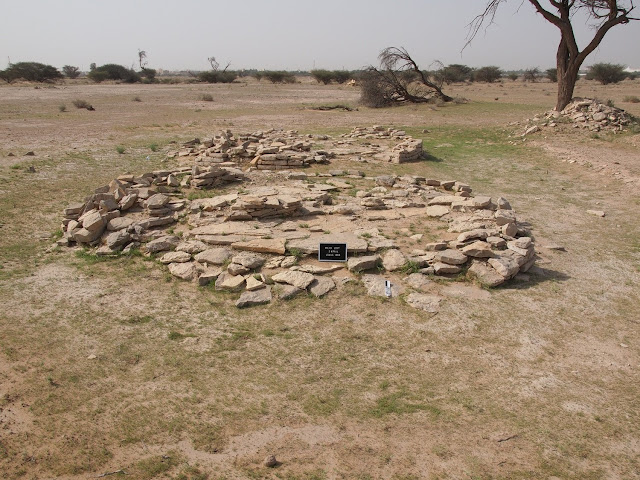Archaeological discoveries throughout the UAE have consistently revealed a rich history stretching back thousands of years. Given the challenging climate, the original inhabitants of the region often lived in one place then moved to another when the climate changed or new resources were discovered. But an exception to this pattern has been found in Abu Dhabi’s second city of Al Ain.
 |
| The Great Tomb at Hili, Al Ain, built around 3000 BC [Credit: David Millar] |
The Department of Culture and Tourism – Abu Dhabi’s (DCT Abu Dhabi) archaeologists have determined that a unique array of resources and the ingenuity of the region’s ancestors ensured the Al Ain oases became a major centre from the Bronze Age to the modern day.As one of the world’s oldest continuously inhabited places, Al Ain with its oases and sites was occupied in all the major periods of the UAE’s history. The date, size and extent of Al Ain’s archaeological sites from this time are unparalleled in our current knowledge of the UAE and broader region.
 |
| Jebel Hafeet in Al Ain, the site of ancient tombs, was home to some of the first civilisations in the Bronze and Iron ages [Credit: Lauren Lancaster/The National] |
Mohamed Khalifa Al Mubarak, Chairman of DCT Abu Dhabi, said, “The Founder Father of the UAE, the late Sheikh Zayed Bin Sultan Al Nahyan, recognised the importance of understanding this ancient past and encouraged fieldwork in Al Ain from the 1960s onwards.The discoveries our team of archaeologists are uncovering are fascinating and reveal incredible details about our ancestors, their lifestyles, their resilience and their ingenuity. These details uncovered about our history and earliest culture are both educational and inspiring to all – especially our younger generations as they build their knowledge and appreciation of their Emirati ancestors.”
 |
| Excavations at Hili 8 exposing 4500 year old archaeological layers [Credit: TCA Abu Dhabi] |
Al Ain provided a true landscape of opportunity. People were able to not only grow crops in the fields but they began mining copper and stones from the nearby mountains. Copper was the oil of the Bronze Age: much prized and needed by expanding economies throughout the known ancient world. Copper was mined and processed in Al Ain, then transported to the coast as ingots on the trade routes that had been established during the earlier Neolithic period. With their knowledge of the sea, these Bronze Age entrepreneurs established a trading port on Umm An Nar Island, right next to the modern city of Abu Dhabi. It was to become a hub for international trade, continuing the tradition that their Neolithic ancestors had began at coastal settlements like Marawah thousands of years earlier, and which Abu Dhabi still is today.
 |
| Two of the Bronze Age tombs located near Hili 8. The people who lived at Hili 8 were buried collectively in these tombs [Credit: TCA Abu Dhabi] |
As the economy expanded, people constructed fortified mudbrick towers, using the clay that was in abundance around the area. Several of these buildings have been excavated by DCT Abu Dhabi archaeologists and visiting international teams. The towers contain numerous rooms with wells at their centre. They also constructed large above ground tombs that can still be seen.
From one of these towers, called Hili 8, evidence for the earliest agriculture in the country, dating back nearly 5,000 years ago, was discovered by French archaeologists in the 1980s.Continuing work by DCT Abu Dhabi at Hili 8 is revealing further evidence for this remarkable early agricultural village.
The Bronze Age inhabitants of Al Ain, also used the copper from the nearby mountains to make weapons and agricultural tools that provided safety and prosperity. Some of these amazing artifacts were found in the discoveries made at Qattara in Al Ain. Excavations of a tomb here, dating to between 4,000 and 3,000 years ago, has revealed dozens of metal weapons that attest to ingenuity and technologically mastery of the time.
Source: The Gulf Today [August 06, 2018]
https://xissufotoday.space/2018/08/archaeological-discoveries-reveal-prehistoric-origins-of-abu-dhabis-al-ain/





Комментариев нет:
Отправить комментарий